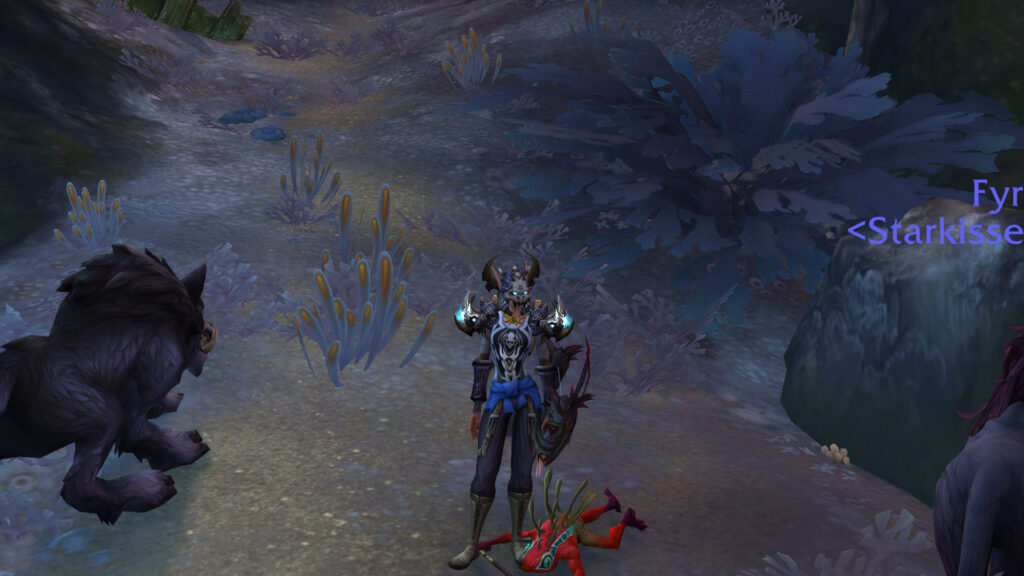
Waiting for an event to start
The Art and Ethics of Deciding Loot in a World of Warcraft Raid
In the vast and immersive world of Azeroth, where epic adventures unfold and legendary treasures await, few moments in World of Warcraft are as pivotal as the division of loot in a raid. Deciding who gets what from the spoils of battle is a complex and often contentious process that requires not only an understanding of game mechanics but also a keen sense of ethics and fairness. In this article, we will delve into the intricate world of loot distribution in WoW raids, exploring the various methods used, the challenges faced, and the importance of maintaining a healthy raiding community.

The Purpose of Loot Distribution
Before we delve into the methods of distribution, it’s essential to understand the underlying purpose. Loot in WoW serves multiple functions, primarily enhancing a character’s power and providing a sense of accomplishment. The acquisition of powerful gear is often a driving force for players to tackle challenging content, such as raiding.

Rewarding Effort and Skill
Loot serves as a reward for players’ time, effort, and skill invested in defeating challenging bosses and overcoming obstacles. It’s a tangible representation of their accomplishments within the game.

Progression
Obtaining better gear enables players to progress through more challenging content. This, in turn, fosters a sense of accomplishment and satisfaction as players conquer new raid encounters.

Community Building
Distribution can either strengthen or fracture a raiding guild’s sense of community. Fair distribution fosters camaraderie, trust, and collaboration among raiders.

Loot Distribution Methods
There are several methods for distributing loot in World of Warcraft raids, each with its own advantages and disadvantages. The choice of method often depends on the raid group’s goals, dynamics, and philosophy.

Need vs. Greed
This is the most straightforward method, where players either “need” an item for their current character or “greed” for it if they want it for off-spec, transmogrification, or simply to sell. Need generally takes priority over greed. While simple, this method can lead to disputes when multiple players “need” the same item.

Personal Loot
Introduced in WoW to address loot disputes, Personal Loot assigns loot directly to individual players based on their class and specialization. This method reduces loot drama but may not always result in optimal distribution.

Council Loot
A council of trusted raiders or officers determines who receives loot. This method is known for being fair and adaptable, as it allows the council to consider various factors like raid needs, player performance, and attendance.

Roll System
This method relies on random rolls by players interested in a particular item. While it is a fair way to distribute loot, it can lead to frustration when players with the greatest need lose a roll to someone with less need.

The Challenges of Loot Distribution
Regardless of the chosen loot distribution method, challenges often arise during loot distribution in World of Warcraft raids. These challenges can strain raiding communities and require careful management.

Loot Drama
Loot disputes, favoritism accusations, and resentment can all lead to drama within a raiding group. Ensuring transparency and open communication is crucial to mitigate these issues.

Attendance and Participation
Players who consistently attend and contribute to raid progression expect to be rewarded for their dedication. Balancing this with the needs of more casual or new members can be challenging.

Class Balance
Some classes or specs may rely more heavily on specific gear types. Ensuring that loot distribution is equitable across all class and specialization combinations is essential for maintaining a balanced raid composition.

Player Skill and Performance
Should loot be distributed solely based on attendance, or should performance be taken into account? Striking the right balance can be difficult.

Ethical Considerations in Loot Distribution
The distribution of loot in World of Warcraft raids is not merely a mechanical process; it’s also a matter of ethics. A raiding guild’s loot system should be built on principles of fairness, trust, and community-building.

Transparency
Players should have a clear understanding of how loot distribution works in their raid group. Transparency reduces misunderstandings and accusations of favoritism.

Fairness
Loot should be distributed with a focus on fairness, taking into account the needs of the raid group as a whole and individual players. Favoring one or a few individuals over others can lead to resentment and division.

Communication
Effective communication is vital. Raid leaders and officers should be open to feedback and willing to explain loot decisions when necessary. Encouraging raiders to voice their concerns can help address issues promptly.

Merit-Based Distribution
While attendance is essential, loot should also be distributed based on merit and performance. Recognizing and rewarding skill and effort can motivate raiders to improve and contribute to the group’s success.

Long-Term Goals
Raid leaders should consider the long-term goals of the raiding group. Prioritizing loot distribution to benefit the group’s progression rather than individual gain fosters a sense of unity.
Loot distribution in World of Warcraft raids is a multifaceted challenge that combines in-game mechanics with ethical considerations. Striking the right balance between fairness, transparency, and performance-based rewards is crucial for maintaining a healthy and cohesive raiding community.

Ultimately, the choice of loot distribution method should align with the goals and values of the raid group. Whether it’s the need vs. greed system, personal loot, council loot, or a roll system, the key is to ensure that the chosen method promotes a positive and inclusive raiding environment where all members feel valued and motivated to contribute their best to the group’s success. By upholding these principles, raid leaders can navigate the complex world of loot distribution and lead their raiders to victory in the ever-expansive world of Azeroth.